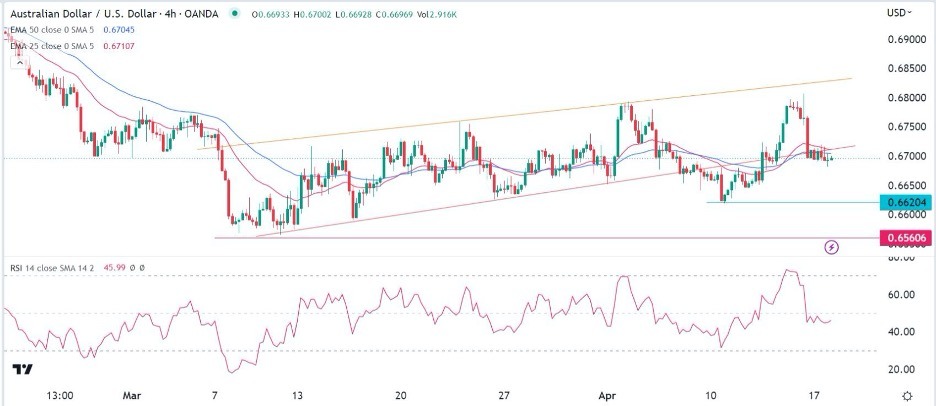Bearish view
- Sell the AUD/USD pair and set a take-profit at 0.6620.
- Add a stop-loss at 0.6735.
- Timeline: 1-2 days.
Bullish view
- Set a buy-stop at 0.6730 and a take-profit at 0.6835.
- Add a stop-loss at 0.6630.
The AUD/USD pair remained under pressure on Tuesday after the latest China GDP numbers and the Reserve Bank of Australia (RBA). The pair was trading at 0.6700, which was lower than this month’s high of 0.6805.
RBA minutes and China data
The RBA delivered minutes of the last meeting on Tuesday morning and explained their reasoning for leaving interest rates unchanged. The minutes showed that the committee was concerned about raising aggressively and the impact on the economy.
They expect that economic growth will expand in 2023 but at a relatively slower pace because of high inflation and interest rates. At the same time, they warned that the committee will likely go back to rate hikes if inflation remains stubbornly high. Analysts expect the bank to pause in the next few minutes as they assess the impact of high rates on the economy.
The pair also reacted to the latest economic numbers from China. According to the National Bureau of Statistics, the economy expanded in the first quarter as the country ended its Covid-19 policies. This expansion happened as the country’s exports and consumer spending bounced back.
China’s economic data are important for the Australian economy because of the vast amount of goods it buys from the country. Some of these goods are coal and iron ore.
The pair has pulled back in the past few days because of the hawkish statement by Fed’s Christopher Waller. In a statement on Friday, he argued that the Fed needs to maintain a hawkish stance since inflation remains stubbornly high.
There will be no major economic data from the United States. The only data to watch will be the upcoming US building permits and housing starts data. Economists expect the data to show that starts dropped to 1.4 million while building permits fell by 6%.
AUD/USD technical analysis
The AUD/USD pair has been in a bearish trend since Friday when it peaked at 0.6804. On the 4H chart, the pair moved slightly below the 50-period moving average and the lower side of the ascending channel. It has also formed a small bearish flag pattern, which is usually a bearish pattern. The Relative Strength Index has drifted downwards.
Therefore, the pair will likely continue falling, with the next key level to watch being at 0.6620, the lowest level on April 10. A move below this level will see it drop to the next support at 0.6560.
Ready to trade our daily Forex signals? Here’s a list of some of the best Forex platforms Australia to check out.
